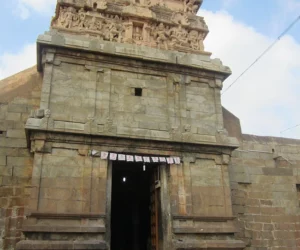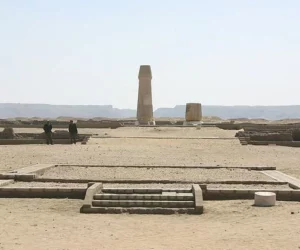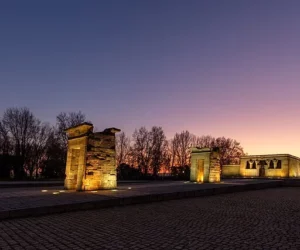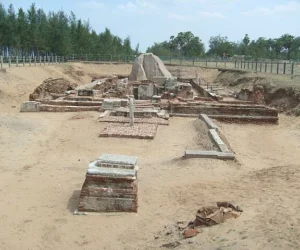The Murugan Temple at Saluvankuppam is an important historical and religious site located in Tamil Nadu, India. This temple is dedicated to Lord Murugan, the Hindu deity of war, youth, and power. It is particularly significant for its architectural style, historical relevance, and religious importance. Historical Background Saluvankuppam is an ancient site that has historical…

Mela Kadambur Amirthakadeswarar Temple
The Mela Kadambur Amirthakadeswarar Temple is a significant religious site located in the Tamil Nadu region of India. This temple is dedicated to Lord Shiva, worshipped here in the form of Amirthakadeswarar. It is known for its rich historical background and architectural beauty, with deep ties to local traditions and religious practices. Historical Significance The…

Erumbeeswarar Temple in Thiruverumbur
Erumbeeswarar Temple, located in Thiruverumbur, Tamil Nadu, India, is a notable Hindu temple dedicated to Lord Shiva. Known for its unique hilltop position, the temple is an important cultural and historical site in South India. It was likely constructed during the Chola period, around the 9th century AD, and later renovated by successive dynasties, including…

Ekambareswarar Temple (Kanchipuram)
The Ekambareswarar Temple in Kanchipuram is one of India’s most prominent Hindu temples, dedicated to Lord Shiva. Located in Tamil Nadu, the temple is part of the sacred Pancha Bhoota Sthalas, where Shiva is worshipped in his elemental forms; here, he represents Earth. The temple’s historical roots extend back to at least 600 AD, making…

Small Aten Temple
The Small Aten Temple, an ancient Egyptian temple dedicated to the deity Aten, stands in the heart of Amarna. Built during the reign of Pharaoh Akhenaten in the 14th century BC, this temple reflects a shift in Egyptian religious practices and architecture. Akhenaten, who ruled from around 1353 BC to 1336 BC, founded the city…

Temple Of Debod
The Temple of Debod, a unique piece of ancient Egyptian architecture, now stands in Madrid, Spain. Originally built in the 2nd century BC in southern Egypt, this ancient structure was dedicated to the gods Amun and Isis. Over centuries, it witnessed modifications and expansions under various rulers, reflecting its enduring religious importance. Today, the temple…

